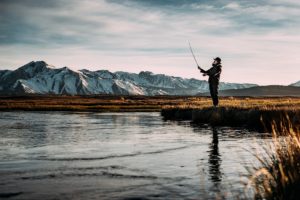- Summers in the U.S. are becoming unbearable due to more frequent and intense heat waves caused by various factors.
- Deforestation, industrial factories, and transportation contribute to increased carbon emissions that trap heat, leading to hotter summers.
- To mitigate these effects, build a swimming pool, stay hydrated, wear lightweight, breathable clothing, use air conditioning, and limit outdoor activities.
- Taking precautionary measures can help you have a fun and safe summer.
Summer is the season of sunshine, picnics, pool parties, and a time to get a tan. However, summers in the U.S. have become unbearable due to sweltering heat waves. These heat waves are not only becoming intense but more frequently hitting the U.S. than before. It is, therefore, essential to understanding why summers in the U.S. are becoming hotter, the impacts, and what can be done to mitigate these effects.
The Current Heat During Summers
It was found that Earth has experienced one of its hottest summers yet. Summer 2022 was one of the hottest summers recorded in the United States, with temperatures reaching 120 degrees Fahrenheit in some areas. The heat wave experienced during this summer was due to a combination of man-made and natural factors. Here are some of the factors contributing to the heat.
Climate Change
A significant reason summers in the U.S. are becoming hotter is climate change caused by global warming. Global warming has resulted in melting glaciers and ice caps, causing sea levels to rise and thus increasing the frequency and intensity of heat waves. Climate change also results in extreme weather events such as droughts and floods, amplifying the problem.

Urbanization
Urbanization plays a major role in increasing the temperature during summers in the U.S. Higher numbers of concrete buildings, roads, and fewer green spaces create the urban heat island effect. The heat island effect occurs because buildings and litter absorb and store heat, making cities several degrees warmer than rural areas. Additionally, urban areas don’t have enough trees to shade and cool down the places naturally, which increases the temperatures, especially in the summer.
Habitat Destruction
Deforestation and habitat destruction play a significant role in increasing temperatures during summers in the U.S. Trees and forests are natural carbon sinks and help cool down the environment. However, with deforestation on the rise, forests are being stripped off, leading to increased carbon emissions, which trap heat within the atmosphere, resulting in hotter summers.
Agriculture and Industrial Practices
Industrial factories and transportation are significant contributors to carbon emissions that cause global warming. Industrial and agricultural practices contribute to increased levels of air pollution, which traps heat within the environment leading to hotter summers. In addition, industrial and agricultural practices use significant amounts of water, reducing ground and surface water levels and creating dry conditions that increase heat intensity.
Human Activities
Human activities like building dams and bridges and bodies of water for recreation can lead to a rise in summer temperatures. This is because, specifically with bodies of water, the water absorbs and retains heat, thus, increasing the temperatures during the summer.
How to Avoid The Heat
You have a few options if you want your family to survive the heat this summer. Here are some of them:
Build a Swimming Pool
A swimming pool can be a great way to cool down in the summer heat. Not only will it provide a fun activity for everyone, but it can also help keep your family cool and comfortable. Contact a local pool service company and get a quotation. They can also survey your backyard and help you design a pool according to your budget.

Stay Hydrated
The most important thing you can do to avoid heat-related illnesses is to stay hydrated. Drink plenty of water throughout the day, even if you don’t feel thirsty. Avoid alcohol, caffeine, and sugary drinks, which can dehydrate you. Carry a reusable water bottle wherever you go, and refill it frequently.
Dress for the Weather
Wear lightweight, breathable clothing in light colors to reflect the sun’s rays. Avoid dark colors, which can absorb heat. Choose fabrics such as cotton or linen, which wick moisture away from your skin and allow air to circulate. Wear a hat to protect your head and face from the sun, and don’t forget your sunglasses!
Use Air Conditioning
If you have air conditioning, use it to keep your home or workplace cool. Set the temperature to around 78 degrees Fahrenheit or lower, and use fans to circulate the air. If you don’t have air conditioning, try to spend time in air-conditioned public buildings such as libraries, malls, or movie theaters.
Limit Outdoor Activities
Avoiding outdoor activities is best during the hottest part of the day (usually between 12 pm and 4 pm). If you must be outside, stay in the shade and take frequent breaks in air-conditioned buildings. Don’t push yourself too hard; listen to your body’s cues. If you feel dizzy, nauseous, or fatigued, it’s time to cool off.
Summer is a great season for fun and relaxation, but it can pose a serious health risk if unprepared. You can enjoy your summer safely in the heat with the right precautions and planning. Remember to stay hydrated, dress for the weather, use air conditioning when possible, and limit outdoor activities during peak hours. Don’t let the heat stop you from having a fun and safe summer!





